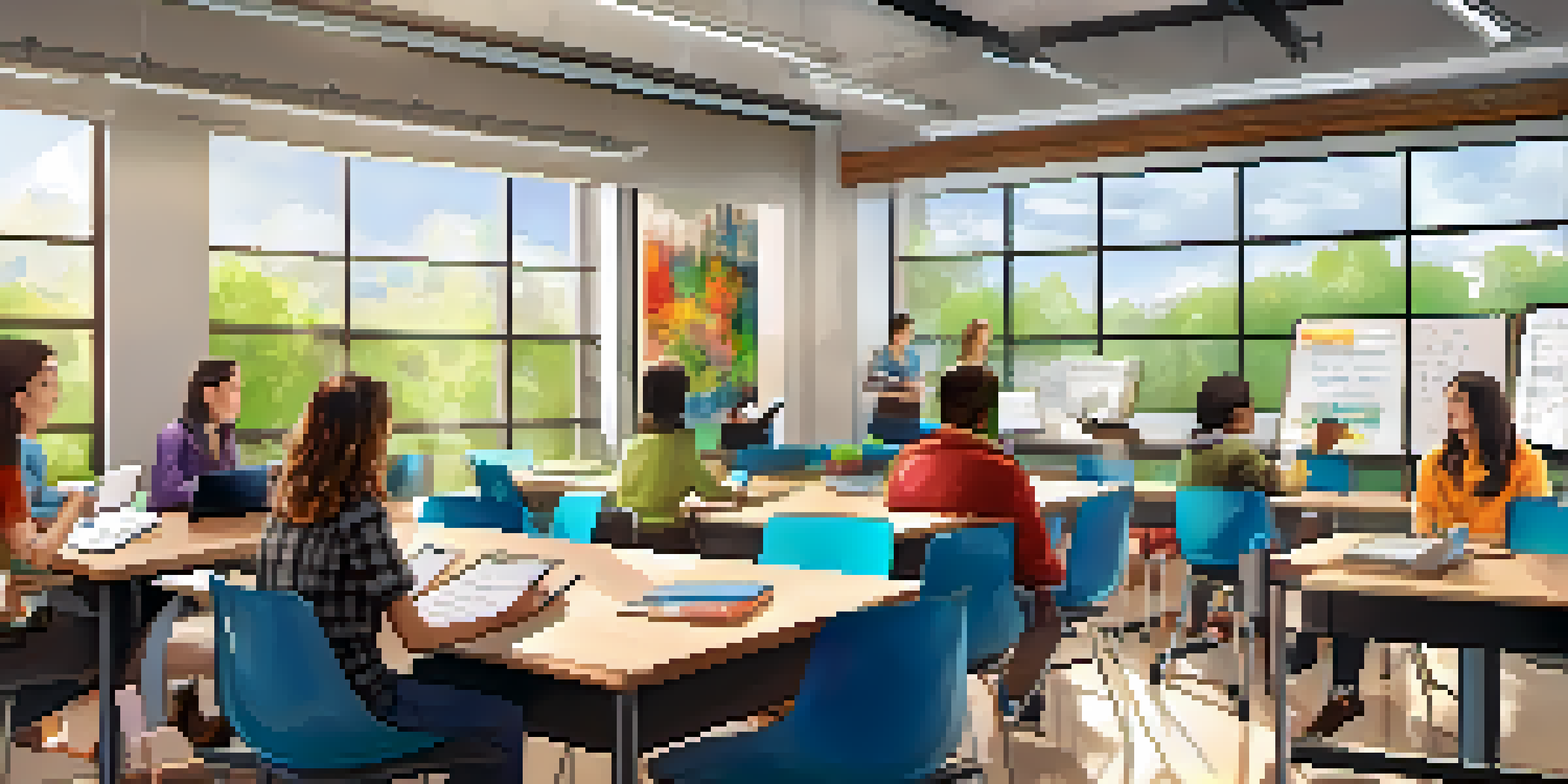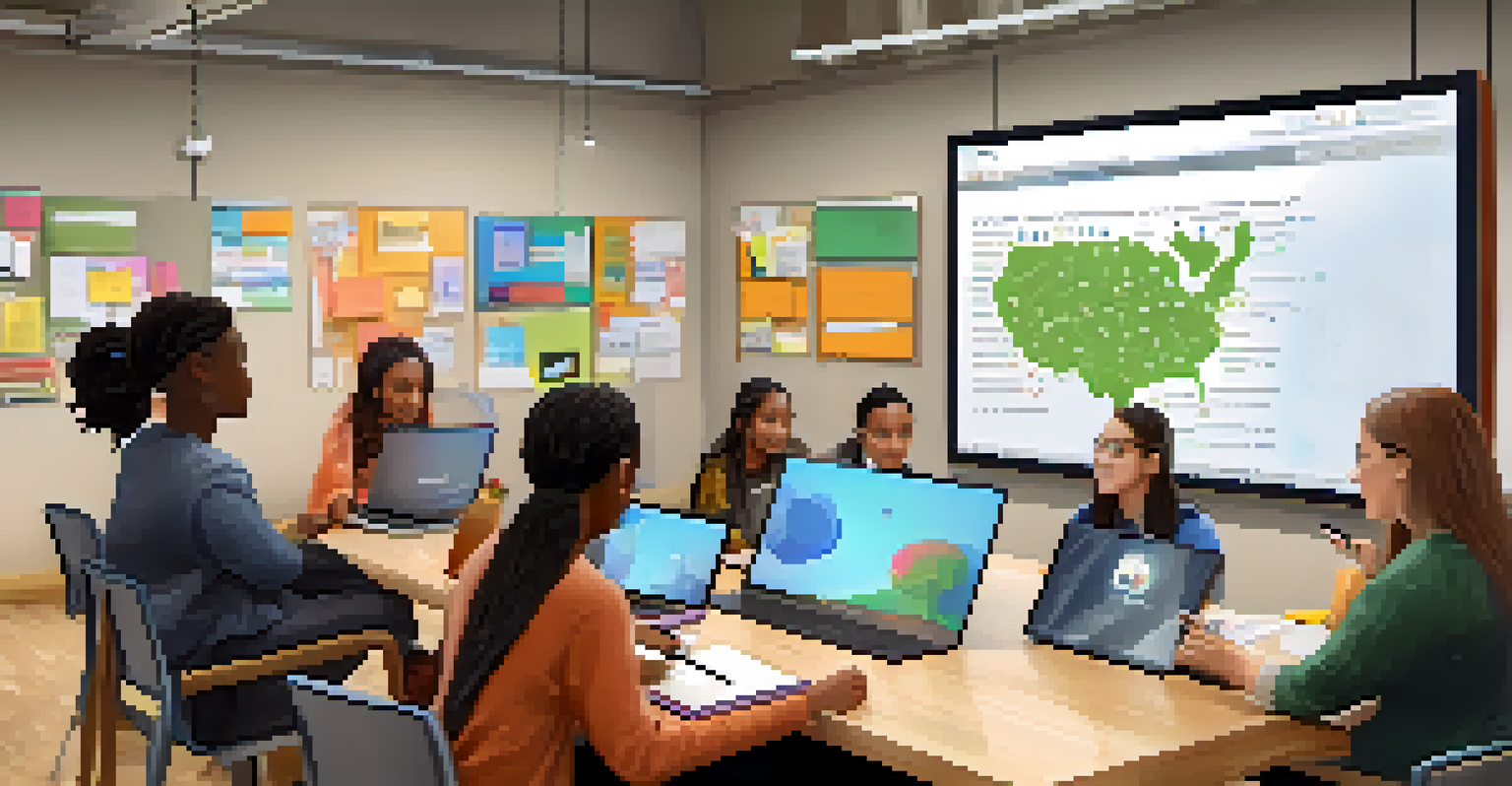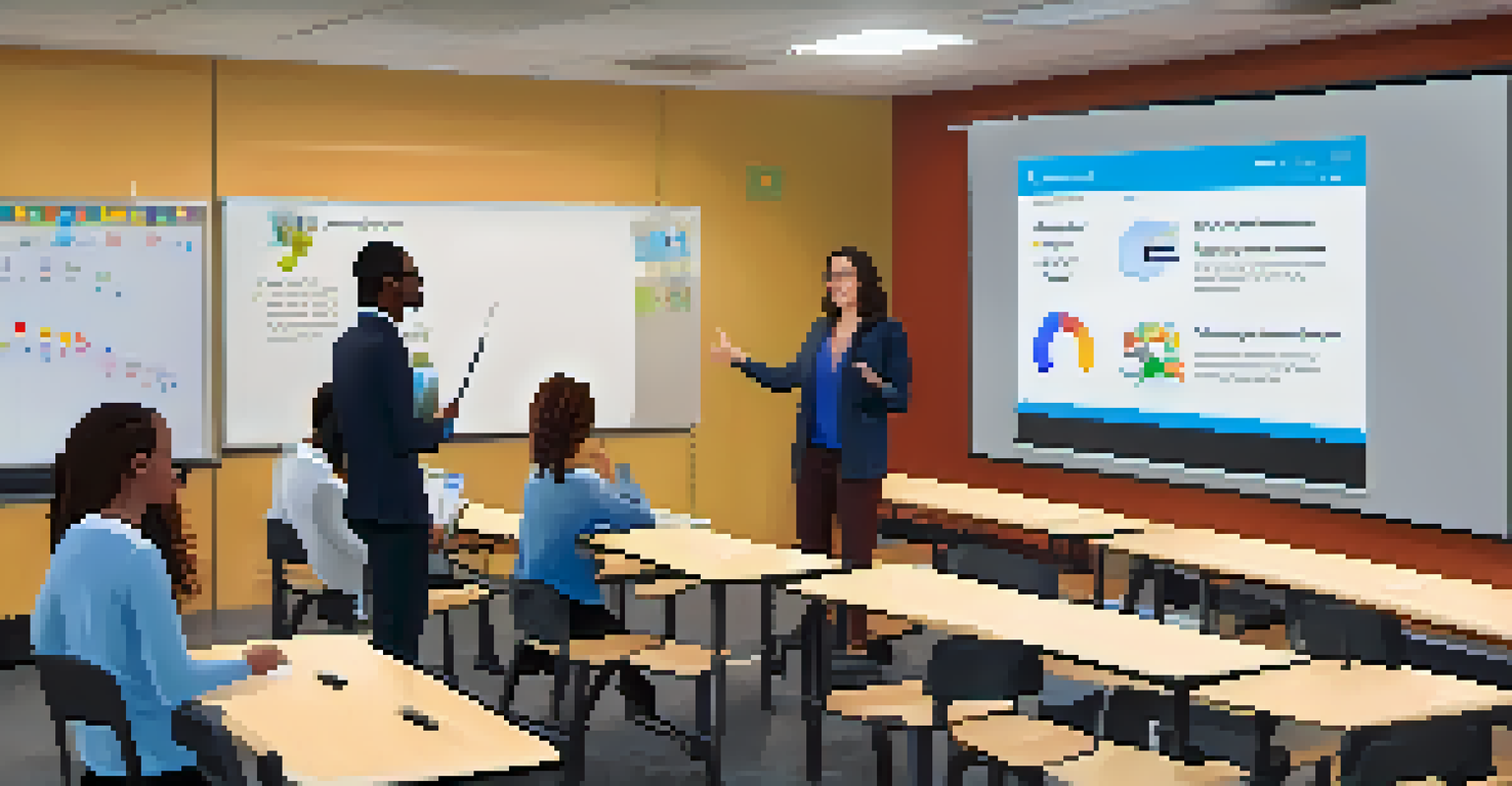Blended Learning and the Development of 21st Century Skills

Understanding Blended Learning: A Definition and Overview
Blended learning combines traditional face-to-face classroom methods with online digital media. This approach allows educators to utilize the best of both worlds, enhancing student engagement and learning outcomes. Imagine a classroom where students can explore topics online and then come together to discuss their findings in person—this is the essence of blended learning.
Blended learning combines the best of both worlds, allowing students to learn at their own pace while still benefiting from face-to-face interactions.
This educational model caters to various learning styles, making it accessible for a wider range of students. For instance, visual learners can benefit from videos, while auditory learners might prefer podcasts. By offering diverse resources, blended learning ensures that every student can find a way to connect with the material.
Moreover, blended learning promotes self-paced study, empowering students to take charge of their learning journey. They can revisit challenging concepts online as needed, which fosters a sense of autonomy and responsibility. This blend of structure and flexibility is particularly advantageous in developing critical 21st-century skills.
The Importance of 21st Century Skills in Today's Society
In our rapidly changing world, 21st-century skills are crucial for success. These skills include critical thinking, collaboration, communication, and creativity, which are essential in both the workplace and everyday life. For example, a team project at work often requires individuals to leverage these skills to achieve a common goal.

As technology continues to evolve, the demand for employees who can adapt and innovate grows. Employers are increasingly seeking candidates who not only possess technical skills but also demonstrate strong interpersonal abilities. This trend highlights the importance of integrating these skills into educational curricula.
Blended Learning Enhances Engagement
Combining traditional and online methods, blended learning boosts student engagement and accommodates diverse learning styles.
Furthermore, 21st-century skills prepare students for lifelong learning. In an era where knowledge is constantly changing, being able to learn how to learn is invaluable. This adaptability ensures that individuals can remain relevant and competitive in their chosen fields.
How Blended Learning Facilitates Skill Development
Blended learning environments are specifically designed to enhance 21st-century skills. By incorporating technology and online resources, students are encouraged to engage in problem-solving activities and collaborative projects. For instance, using online discussion boards allows students to share ideas and feedback, fostering collaboration.
The future of education is not just in the classroom; it's in the blend of technology and personal engagement.
Additionally, blended learning promotes critical thinking by providing students with access to a wealth of information. Instead of simply memorizing facts, learners are challenged to analyze and synthesize data, drawing their own conclusions. This critical engagement is key to developing informed decision-making skills.
Moreover, blended learning encourages creativity by allowing students to explore various mediums for expressing their ideas. Whether through multimedia presentations or digital storytelling, students can experiment and showcase their unique perspectives. This creative freedom enriches the learning experience and cultivates innovative thinkers.
The Role of Technology in Blended Learning
Technology acts as the backbone of blended learning, providing the tools necessary for effective education. Online platforms and resources make it easy for educators to curate content and design interactive lessons. For example, learning management systems (LMS) allow teachers to track student progress and tailor instruction accordingly.
Moreover, technology fosters connectivity among students and teachers, breaking down geographical barriers. Virtual classrooms can bring together diverse groups, allowing for rich discussions and a variety of perspectives. This global connectivity not only enhances learning but also prepares students for a diverse workplace.
21st Century Skills are Essential
Critical thinking, collaboration, and creativity are vital competencies that blended learning cultivates for success in today's society.
However, it’s essential to balance technology with traditional methods. While digital tools are powerful, they should complement—not replace—face-to-face interactions. The synergy of both approaches enhances the learning experience and ensures students develop well-rounded skills.
Challenges of Implementing Blended Learning
Despite its benefits, implementing blended learning comes with challenges. One of the primary hurdles is ensuring equal access to technology for all students. In some areas, students may lack reliable internet access or devices, creating disparities in learning opportunities.
Additionally, educators may struggle with the transition from traditional teaching methods to a blended approach. This shift requires training and support to effectively integrate technology into the classroom. Professional development programs can help teachers feel more comfortable with digital tools and teaching techniques.
Lastly, maintaining student engagement in a blended environment can be tricky. Without the structure of a traditional classroom, some students may struggle to stay motivated. Educators need to find creative ways to keep students accountable and engaged, such as setting clear expectations and incorporating gamification.
Measuring the Effectiveness of Blended Learning
To truly understand the impact of blended learning, it’s crucial to measure its effectiveness. Educators can use various assessment tools to evaluate student performance and skill development. For instance, standardized tests can provide insights into academic achievement, while portfolios can showcase individual progress.
Feedback from students also plays a vital role in assessing blended learning's success. Surveys and focus groups can offer valuable perspectives on what is working and what needs improvement. This feedback loop allows educators to make informed adjustments to their teaching strategies.
Technology is Key to Blended Learning
The integration of technology in blended learning environments enables connectivity and personalized education, essential for modern classrooms.
Furthermore, tracking the development of 21st-century skills can provide a clearer picture of blended learning's benefits. Observing how students collaborate on projects or approach problem-solving tasks can highlight skill growth. This ongoing evaluation ensures that blended learning continues to meet the evolving needs of students.
The Future of Blended Learning in Education
Looking ahead, blended learning is poised to play a significant role in the future of education. As technology continues to advance, we can expect even more innovative tools and resources that enhance the learning experience. Virtual reality, artificial intelligence, and personalized learning algorithms are just a few examples of what lies ahead.
Moreover, the shift toward remote and hybrid learning models, sparked by global events, has normalized blended approaches. Schools and universities are increasingly adopting these methods, recognizing their potential to engage students and develop essential skills. This trend is likely to grow, shaping the educational landscape.

Ultimately, the future of blended learning hinges on collaboration among educators, students, and technology developers. By working together, we can create dynamic learning environments that empower students to thrive in the 21st century. The key is to remain flexible and open to change, ensuring that education evolves alongside society's needs.